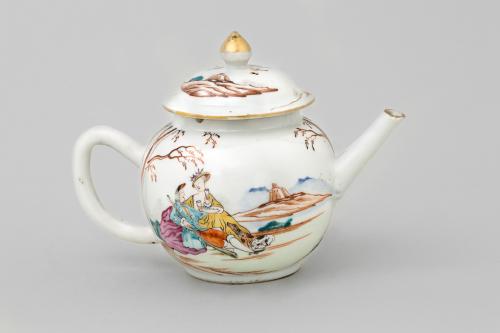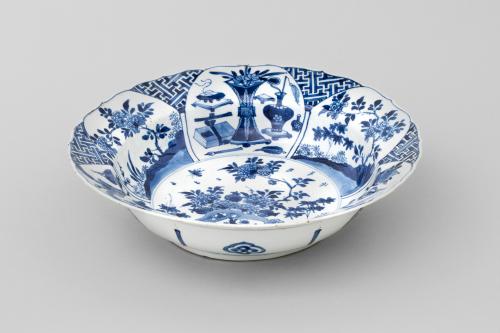




Price on application
This object is eligible for a Certificate of BADA Provenance
The BADA Standard
- Since 1918, BADA has been the leading association for the antiques and fine art trade
- Members are elected for their knowledge, integrity and quality of stock
- Our clients are protected by BADA’s code of conduct
- Our dealers’ membership is reviewed and renewed annually
- Bada.org is a non-profit site: clients deal directly with members and they pay no hidden fees
A Near Pair of Chinese Blue and White Porcelain Flasks
Of square-form painted on each panel with flowers of the four seasons, viz: lotus, prunus, peony and chrysanthemum, the unglazed foot with recessed gazed square painted with
artemesia leaf marks
PROVENANCE
The Penrose Estate, Porthleven, Cornwall
LITERATURE
Flasks in the 15th century often derived in shape from Islamic forms reflecting the strong ties between China and Persia. In the 16th century and 17th century the trading between China and Europe strengthened as can be witnessed in the interchange of ceramic designs and forms. The square bottle flask is testament to this as it is modelled on European glass ware. The flasks were originally made for storing alcohol on long sea journeys. For a discussion on flasks see Harrison-Hall, Jessica, Catalogue of Late Yuan and Ming Ceramics in the British Museum, London, BMP, 2001, where she points out that although the form of the bottle is entirely European, the decoration is strictly confined to the Chinese repertoire. This is also the case in our Kangxi period flasks. European style decoration is also found on the square bottle flasks and there are Kangxi examples known with initials on the base believed to have been ordered for the General Governor of the V.O.C., Pieter Van Hoorn, who was stationed in Batavia between 1684 and 1691 and sent to address the Emperor Kangxi.
Lotus Symbol of purity and perfection. Emblem of summer and fruitfulness. One of the Eight Treasures of Buddhism, also held in great esteem by Daoists
Prunus Emblem for winter. Often depicted on old Chinese porcelain together with pine and bamboo and known as the Three Friends of Winter as they are evergreen.
Peony King of flowers An omen of good fortune. Emblem of love and affection and feminine beauty. The sign of spring.
Chrysanthemum symbolizes autumn and is generally associated with a life of ease and retirement from public office. One of China's great poets Tao Qian living in the late 4thcentury early 5th century on being offered an official post, turned it down to be able instead, in spite of being poor, to devote his life to poetry, music wine and …… chrysanthemum growing.
Dimensions
Height: 29cm, Width: 11cmStock number
BG23The BADA Standard
- Since 1918, BADA has been the leading association for the antiques and fine art trade
- Members are elected for their knowledge, integrity and quality of stock
- Our clients are protected by BADA’s code of conduct
- Our dealers’ membership is reviewed and renewed annually
- Bada.org is a non-profit site: clients deal directly with members and they pay no hidden fees








